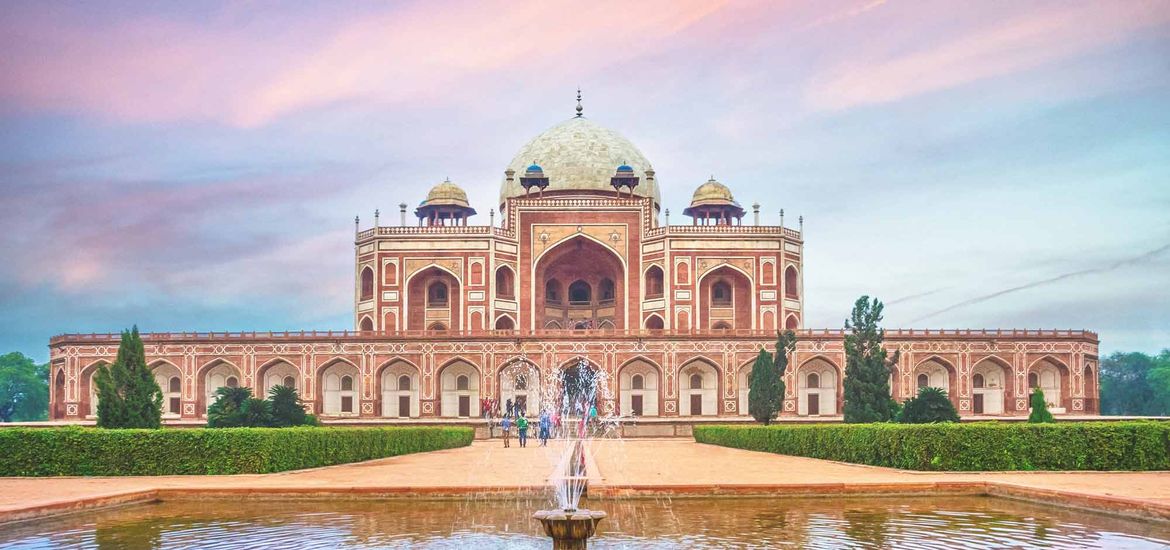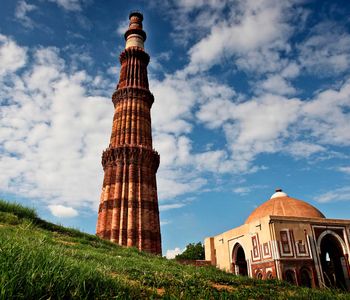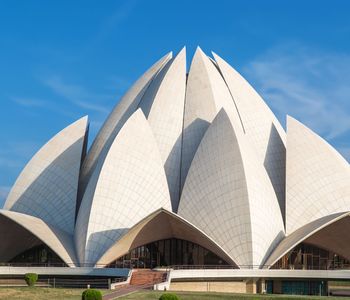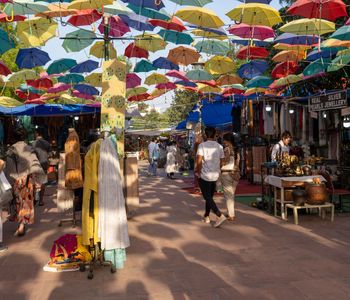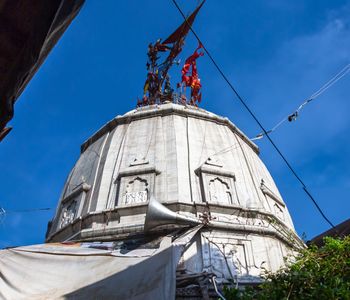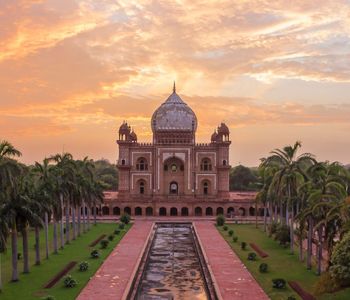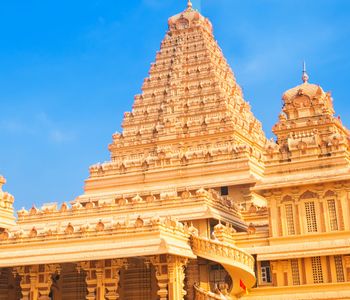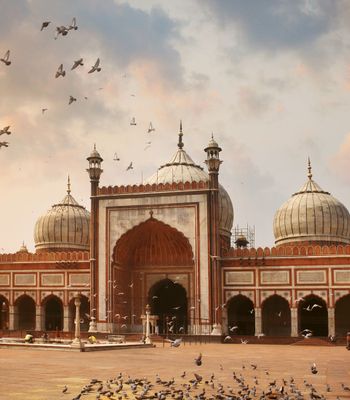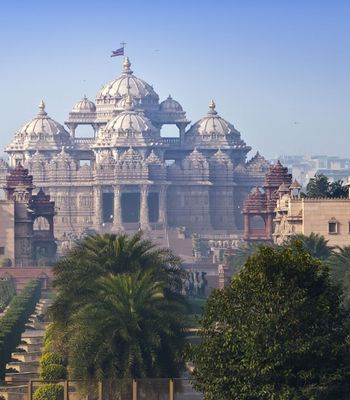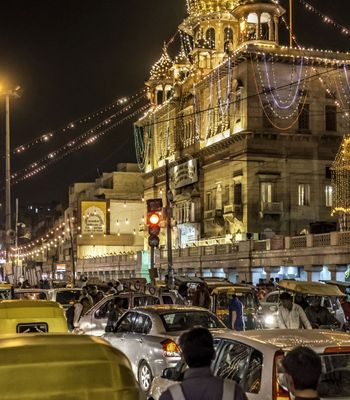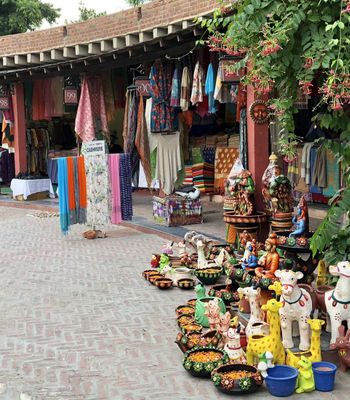The first garden tomb to be built in India, history remembers this as the site of love, devotion, and memory immortalised.
Commissioned by Begum Bega for her husband, this mausoleum also houses the remains of some powerful leaders from the Mughal era. The red sandstone structure, stretching across 100 metres, sticks out like the remaining vestiges of an era long gone but not forgotten.
Looking Back
Built to suit the second Mughal Emperor, Humayun’s tomb stands as a sturdy reminder of Mughal grandiosity and the historical style of their royal mausoleums. Started in 1565, it was 7 years before the construction was completed in all its glory.
Nine years after Emperor Humayun died while falling off the stairs, his first wife, Bega Begum, aka Dara Shikoh, hired a Persian architect to design the Emperor’s tomb. Not only did she get a team of workers together and pay them, but she also supervised the construction from start to finish.
In an ill twist of fate, the architect, Mirak Mirza Ghiyas, passed away before he could see his vision realised. His son, Sayyid Muhammad ibn Mirak Ghiyath Ud Din, stepped in to finish what his father had started so ambitiously.
In the spires therein lay many such tales of love that transcend the veil separating the living from the dead.
Factors Contributing to its Stunning Architecture
The tomb is located in the middle of Char Bagh Garden, whose Persian layout is reminiscent of the fabled Paradise. The quadrilateral garden, divided into four, is artistically separated by waterways, greenery, and roads.
Four gardens and four rivers—just as Paradise was visualised in the Quran. Char Bagh, in itself, is a beautiful construction to witness, with the tomb complex adding to its charm.
The first structure to employ red sandstone at such a massive scale, Humayun’s tomb has more than one reason behind its timeless popularity.
Influences
A tasteful amalgamation of Turkish, Indian, and Persian architectural styles, this particular genre of design was first introduced during the reign of Akbar the Great.
The white marble domes, latticework, pietra dura floors, and attics all come together seamlessly in a complex and intricate design. Two giant double-storeyed gateways welcome us inside the complex, with a baradari and hammam situated at the centre of the eastern and northern walls.
Dimensions
A perfectly symmetrical structure, the tomb itself is built at a height of 7 metres, stretching 47 metres high and 91 metres wide. The adjacent domes bear an average height of 42.5 metres each.
Buildings Within
There are roughly 150 tombs within the entire garden-tomb complex. The site features mosques of the olden days, alongside tombs of other rulers.
In fact, among the tombs dotting the entry pathway, one was built twenty years before Humayun’s. Constructed in 1547, it houses the remains of Isa Khan Niazi—a noble at the court of Sher Shah Suri.
Special Aspects of the Tomb Complex
Mughal architecture, in all its glory, still falls short of the intricate magic stories can bring. There are so many interesting aspects in the garden tomb complex, stretching beyond Humayan’s tomb in the central chamber.
Enchanted Shrine
Outside the complex lies the shrine of Hazrat Nizamuddin Auliya. A 14th-century Sufi saint, Auliya believed in embracing the purity of God and destroying one’s ego.
The location of Humayun’s tomb itself was chosen based on its proximity to Nizamuddin Dargah—the cherished saint’s mausoleum. Outside Char Bagh, Auliya’s shrine stands as a stark reminder to passers-by, drawing them in for a touch of peace.
Several Mughal rulers were buried close to the shrine since any proximity to the saint was considered auspicious. Many tourists consider this one of the main attractions of the tomb complex due to its reputation of cleansing energy.
Central Burial Chamber
In keeping with Islamic tradition, Humayun’s tomb is laid on a north-south axis. Eight chambers branch out from this main area.
The complex houses 124 vaulted chambers—many of them cenotaphs (empty or honourary tombs) of other nobility. The whole complex is said to house 150 tombs, earning it the moniker ‘Dormitory of the Mughals’.
Humayun’s Belongings
The central cenotaph sports a tent overhead which carries the Emperor’s sword, shoes, and turban. Standing in the middle of the dome, it feels like one is whisked away to several thousand years ago.
Inspired the Taj Mahal
Built almost a century later, one of the world’s seven wonders was inspired by Humayun’s tomb. The tale of Haji Begum’s grief and unconditional love moved Shah Jahan to demonstrate his affections similarly for his deceased wife, Mumtaz Mahal.
Ideal Time for a Trip
Given the high temperatures in a tropical country, Delhi is ideal for tourism between October and March. The temperatures are lower, and the heat is not directly piercing down on tourists.
Mughal structures, essentially featuring heavy use of marble, tend to keep much cooler than the outside temperature. So, one may set out any day to roam this wonderland between 6 AM and 6 PM, potentially aiming for the twilight hours.
Directions to the Humayun Tomb
Here are the multiple ways to reach this marvel:
By Air
To visit this site, you have to use the Indira Gandhi International Airport. It charters both domestic and international flights. Located about 25 km away from the monument, it takes about 50 minutes by cab to reach the Tomb from the airport.
By Train
You can take a direct train from Delhi Gate Station to Jangpura—leaving every 10 minutes. From there, it takes about 20 minutes by foot to reach the Tomb.
By Road
Located close to Nizamuddin Dargah, the nearest metro station is Jawaharlal Nehru Stadium, 2 km away, which can be accessed via the Violet line. Another station close by is the Jorbagh metro station via the yellow line, which is approximately 5 km away.
You may hire taxis or take local auto-rickshaws, but buses (both AC and non-AC) ply up and down that route regularly and are the cheaper, more reliable alternative.
Humayun’s Tomb isn’t just a relic of the past—it’s a whisper of a bygone empire, echoing through its red sandstone corridors. It tells a story, etched in stone, of an era when architecture wasn’t just about grandeur but about remembrance. Centuries may pass, but its legacy stands unshaken, a timeless guardian of the stories it holds within.
